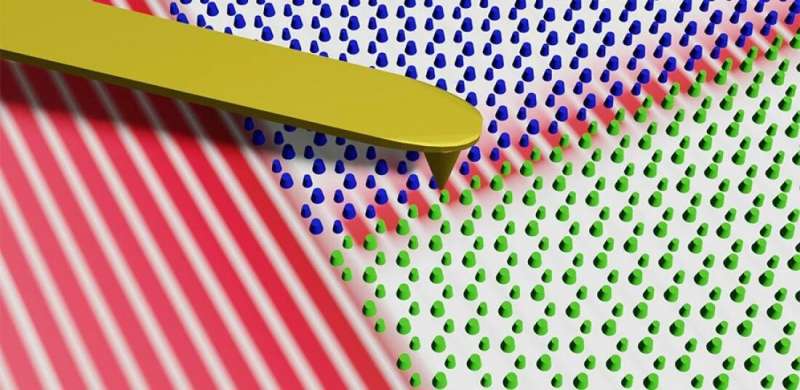Pays.org January 30, 2023
Researchers in Japan have shown that in a honeycomb phononic crystal composed of metallic nanopillars on a LiNbO3 substrate, the topological surface acoustic wave (SAW) mode inhabits the edge of the honeycomb phononic crystal in spite of the hybridization with the internal acoustic modes of the substrate. Pulse-type microwave impedance microscopy showed gigahertz topological edge mode between two mutually inverted topological phononic crystals. A frequency-dependent image showed that the edge mode evolves as the bulk SAW modes are suppressed owing to the energy gap formation, consistent with the topological nature. According to researchers the realization of a topological waveguide in a simple pillar structure on a substrate might pave a new path to the development of topological SAW devices for a wide range of usages such as quantum computing, sensing, and communication applications…read more. TECHNICAL ARTICLE

A schematic of the topological surface acoustic waveguide. Credit: Yoichi Nii